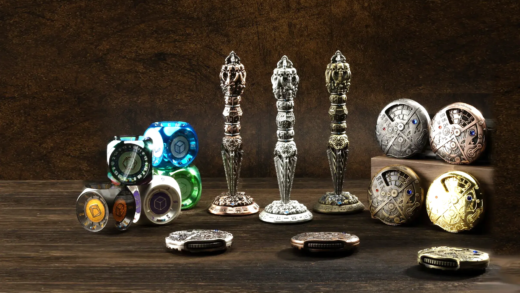Blue-tongued skinks are friendly reptiles suitable for kids, with a lifespan of 15-20 years. They require a balanced diet and proper habitat to thrive. Signs of a healthy skink include bright eyes and active behavior. Fun facts reveal their unique defense mechanisms and communication styles.
What is a Blue-Tongued Skink?
A blue-tongued skink is a fascinating reptile that stands out due to its vibrant blue tongue. This characteristic is not just for show; it serves as a warning to predators. Blue-tongued skinks belong to the family Scincidae and are native to Australia and New Guinea. They come in various species, each with unique patterns and colors, but all share the distinctive blue tongue.
These reptiles are known for their friendly demeanor, making them popular pets among reptile enthusiasts. Their calm nature allows them to adapt well to handling, which is a big plus for first-time owners. Blue-tongued skinks are diurnal, meaning they are active during the day, which makes observing them easier and more enjoyable.
Lifespan of Blue-Tongued Skinks
The lifespan of blue-tongued skinks can be impressive. In captivity, with proper care, these reptiles can live between 15 to 20 years, sometimes even longer! Factors that contribute to their longevity include diet, habitat, and regular veterinary check-ups.
To ensure your blue-tongued skink reaches its maximum lifespan, consider the following tips:
- Provide a balanced diet rich in vitamins and minerals.
- Maintain a clean and spacious habitat.
- Regularly check for signs of illness.
- Ensure they receive appropriate lighting and heating.
Blue-Tongued Skink Diet
The diet of a blue-tongued skink is diverse and should consist of a mix of protein and plant matter. These skinks are omnivores, which means they enjoy a variety of foods. A healthy diet for your skink includes:
- Insects (crickets, mealworms, and roaches)
- Fruits (berries, apples, and melons)
- Vegetables (carrots, leafy greens, and squash)
Feeding your blue-tongued skink a well-rounded diet not only keeps them healthy but also supports their vibrant colors and overall well-being. It’s important to avoid feeding them high-fat foods and to ensure that any fruits or vegetables are fresh and free from pesticides.
Blue-Tongued Skink Care Essentials
To keep your blue-tongued skink happy and healthy, you need to understand their care requirements. This reptile thrives in a well-maintained environment that mimics its natural habitat. Here are the essential tips:
- Habitat Setup: Provide a spacious terrarium with ample hiding spots using logs, rocks, and plants. A minimum size of 40 gallons is recommended for adults.
- Temperature and Lighting: Maintain a basking area of 90°F and a cooler side around 75°F. Use UVB lighting to support their health and metabolism.
- Humidity Levels: Keep humidity levels between 30% and 50%. Mist the habitat lightly to maintain moisture without causing mold.
- Regular Cleaning: Clean the terrarium weekly to prevent bacteria buildup. Remove uneaten food and waste promptly.
- Vet Check-ups: Schedule regular veterinary visits to monitor health and prevent diseases.
By following these care guidelines, you can ensure that your blue-tongued skink lives a long, fulfilling life. Remember, a happy skink is a healthy skink!
Personality of Blue-Tongued Skinks
What makes blue-tongued skinks so friendly? Their calm demeanor and curiosity set them apart from other reptiles. They are known for their sociable nature, often enjoying human interaction.
Many owners report that blue-tongued skinks recognize their caregivers and may even respond to their voices. They often become comfortable enough to sit on their owners’ laps, creating a bond that is unique for a reptile. Their friendly attitude makes them suitable pets for families and individuals alike.
Bonding with Your Blue-Tongued Skink
Interaction with your blue-tongued skink is key to building a strong relationship. These reptiles thrive on routine and familiarity. Here are some tips for bonding:
- Consistent Handling: Regular, gentle handling helps your skink get used to you. Start with short sessions and gradually increase the time.
- Feeding Time: Use feeding as an opportunity for interaction. Offer food by hand to build trust.
- Observation: Spend time watching your skink. This not only helps you understand their behavior but also allows them to acclimate to your presence.
Over time, your blue-tongued skink will learn to recognize you as part of its environment, leading to a rewarding companionship. These interactions enhance both your lives, making pet ownership an enjoyable experience!
Are Blue-Tongued Skinks Suitable for Kids?
Blue-tongued skinks are often considered kid-friendly pets, thanks to their calm and sociable nature. They are less likely to bite compared to other reptiles, making them a safer option for children. When introducing a blue-tongued skink to kids, supervision is essential to ensure gentle handling and to teach proper care techniques.
Here are some reasons why blue-tongued skinks can be great companions for kids:
- Low Maintenance: These reptiles do not require extensive care, making them ideal for busy families.
- Interactive: Blue-tongued skinks enjoy handling and can form bonds with their young owners.
- Educational: Owning a skink teaches kids responsibility and the basics of animal care.
- Non-aggressive: Their friendly demeanor reduces the likelihood of fear or injury during interactions.
Overall, with the right guidance, blue-tongued skinks can be a fun and educational pet choice for children.
Preferred Habitat of Blue-Tongued Skinks
In the wild, blue-tongued skinks thrive in a variety of habitats, including forests, grasslands, and scrublands. They prefer environments that provide plenty of cover and hiding spots, as these reptiles are naturally secretive.
Key aspects of their natural habitat include:
- Temperature: They enjoy warm climates, typically found in Australia and New Guinea.
- Vegetation: Dense foliage and rocks provide shelter and protection from predators.
- Humidity: They thrive in areas with moderate humidity, which helps with hydration and skin shedding.
For pet owners, replicating these conditions in captivity is crucial. A spacious terrarium with appropriate heating, humidity, and decor that mimics their natural surroundings will help your blue-tongued skink feel at home.
Signs of a Healthy Blue-Tongued Skink
To ensure your blue-tongued skink is thriving, it’s important to recognize the signs of good health. A healthy skink exhibits several characteristics that indicate well-being:
- Bright Eyes: Clear, bright eyes without swelling or discharge.
- Healthy Skin: Smooth, vibrant skin without lesions or discoloration.
- Active Behavior: A lively skink that explores its habitat and responds to handling.
- Regular Eating: Consistent appetite with regular bowel movements.
- Proper Shedding: Shedding skin in one piece without retained shed can indicate good hydration levels.
Regular veterinary check-ups are also essential for monitoring your skink’s health and addressing any potential issues early.
Fun Facts About Blue-Tongued Skinks
Here are some quirky tidbits about blue-tongued skinks that you might find fascinating:
- Colorful Defense: Their bright blue tongue is a warning signal to potential predators, effectively scaring them off.
- Variety of Species: There are several species of blue-tongued skinks, each with unique colors and patterns, such as the Eastern blue-tongued skink and the Northern blue-tongued skink.
- Tail Defense: If threatened, a skink may drop its tail, which can continue to move and distract predators while it escapes.
- Long Lifespan: With proper care, they can live for over 20 years, making them a long-term commitment for pet owners.
- Unique Communication: Blue-tongued skinks communicate through body language, using their posture and movements to convey their feelings.
These interesting traits make blue-tongued skinks not just pets, but also remarkable reptiles to learn about!





Comments are closed.